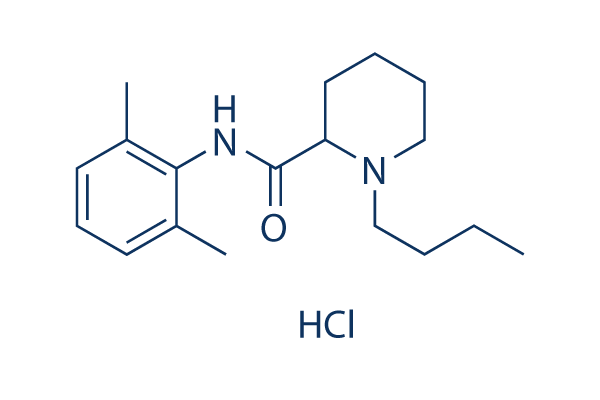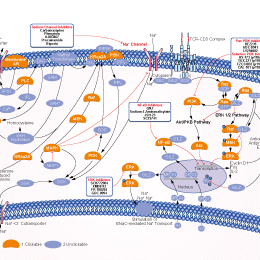
- Bioactive Compounds
- By Signaling Pathways
- PI3K/Akt/mTOR
- Epigenetics
- Methylation
- Immunology & Inflammation
- Protein Tyrosine Kinase
- Angiogenesis
- Apoptosis
- Autophagy
- ER stress & UPR
- JAK/STAT
- MAPK
- Cytoskeletal Signaling
- Cell Cycle
- TGF-beta/Smad
- Compound Libraries
- Popular Compound Libraries
- Customize Library
- Clinical and FDA-approved Related
- Bioactive Compound Libraries
- Inhibitor Related
- Natural Product Related
- Metabolism Related
- Cell Death Related
- By Signaling Pathway
- By Disease
- Anti-infection and Antiviral Related
- Neuronal and Immunology Related
- Fragment and Covalent Related
- FDA-approved Drug Library
- FDA-approved & Passed Phase I Drug Library
- Preclinical/Clinical Compound Library
- Bioactive Compound Library-I
- Bioactive Compound Library-Ⅱ
- Kinase Inhibitor Library
- Express-Pick Library
- Natural Product Library
- Human Endogenous Metabolite Compound Library
- Alkaloid Compound LibraryNew
- Angiogenesis Related compound Library
- Anti-Aging Compound Library
- Anti-alzheimer Disease Compound Library
- Antibiotics compound Library
- Anti-cancer Compound Library
- Anti-cancer Compound Library-Ⅱ
- Anti-cancer Metabolism Compound Library
- Anti-Cardiovascular Disease Compound Library
- Anti-diabetic Compound Library
- Anti-infection Compound Library
- Antioxidant Compound Library
- Anti-parasitic Compound Library
- Antiviral Compound Library
- Apoptosis Compound Library
- Autophagy Compound Library
- Calcium Channel Blocker LibraryNew
- Cambridge Cancer Compound Library
- Carbohydrate Metabolism Compound LibraryNew
- Cell Cycle compound library
- CNS-Penetrant Compound Library
- Covalent Inhibitor Library
- Cytokine Inhibitor LibraryNew
- Cytoskeletal Signaling Pathway Compound Library
- DNA Damage/DNA Repair compound Library
- Drug-like Compound Library
- Endoplasmic Reticulum Stress Compound Library
- Epigenetics Compound Library
- Exosome Secretion Related Compound LibraryNew
- FDA-approved Anticancer Drug LibraryNew
- Ferroptosis Compound Library
- Flavonoid Compound Library
- Fragment Library
- Glutamine Metabolism Compound Library
- Glycolysis Compound Library
- GPCR Compound Library
- Gut Microbial Metabolite Library
- HIF-1 Signaling Pathway Compound Library
- Highly Selective Inhibitor Library
- Histone modification compound library
- HTS Library for Drug Discovery
- Human Hormone Related Compound LibraryNew
- Human Transcription Factor Compound LibraryNew
- Immunology/Inflammation Compound Library
- Inhibitor Library
- Ion Channel Ligand Library
- JAK/STAT compound library
- Lipid Metabolism Compound LibraryNew
- Macrocyclic Compound Library
- MAPK Inhibitor Library
- Medicine Food Homology Compound Library
- Metabolism Compound Library
- Methylation Compound Library
- Mouse Metabolite Compound LibraryNew
- Natural Organic Compound Library
- Neuronal Signaling Compound Library
- NF-κB Signaling Compound Library
- Nucleoside Analogue Library
- Obesity Compound Library
- Oxidative Stress Compound LibraryNew
- Plant Extract Library
- Phenotypic Screening Library
- PI3K/Akt Inhibitor Library
- Protease Inhibitor Library
- Protein-protein Interaction Inhibitor Library
- Pyroptosis Compound Library
- Small Molecule Immuno-Oncology Compound Library
- Mitochondria-Targeted Compound LibraryNew
- Stem Cell Differentiation Compound LibraryNew
- Stem Cell Signaling Compound Library
- Natural Phenol Compound LibraryNew
- Natural Terpenoid Compound LibraryNew
- TGF-beta/Smad compound library
- Traditional Chinese Medicine Library
- Tyrosine Kinase Inhibitor Library
- Ubiquitination Compound Library
-
Cherry Picking
You can personalize your library with chemicals from within Selleck's inventory. Build the right library for your research endeavors by choosing from compounds in all of our available libraries.
Please contact us at [email protected] to customize your library.
You could select:
- Antibodies
- Bioreagents
- qPCR
- 2x SYBR Green qPCR Master Mix
- 2x SYBR Green qPCR Master Mix(Low ROX)
- 2x SYBR Green qPCR Master Mix(High ROX)
- Protein Assay
- Protein A/G Magnetic Beads for IP
- Anti-Flag magnetic beads
- Anti-Flag Affinity Gel
- Anti-Myc magnetic beads
- Anti-HA magnetic beads
- Poly FLAG Peptide lyophilized powder
- Protease Inhibitor Cocktail
- Protease Inhibitor Cocktail (EDTA-Free, 100X in DMSO)
- Phosphatase Inhibitor Cocktail (2 Tubes, 100X)
- Cell Biology
- Cell Counting Kit-8 (CCK-8)
- Animal Experiment
- Mouse Direct PCR Kit (For Genotyping)
- New Products
- Contact Us
Bupivacaine HCl
Bupivacaine HCl binds to the intracellular portion of voltage-gated sodium channels and blocks sodium influx into nerve cells, used for treating cardiac arrhythmias.

Bupivacaine HCl Chemical Structure
CAS: 18010-40-7
Selleck's Bupivacaine HCl has been cited by 4 publications
Purity & Quality Control
Batch:
Purity:
99.94%
99.94
Bupivacaine HCl Related Products
| Related Compound Libraries | FDA-approved Drug Library Natural Product Library Ion Channel Ligand Library Exosome Secretion Related Compound Library Calcium Channel Blocker Library | Click to Expand |
|---|
Signaling Pathway
Choose Selective Sodium Channel Inhibitors
Biological Activity
| Description | Bupivacaine HCl binds to the intracellular portion of voltage-gated sodium channels and blocks sodium influx into nerve cells, used for treating cardiac arrhythmias. | |
|---|---|---|
| Targets |
|
| In vitro | ||||
| In vitro | Bupivacaine solution is cytotoxic to bovine articular chondrocytes and articular cartilage in vitro after only 15 to 30 minutes exposure. [1] Bupivacaine acts in isolated mitochondria, as uncouplers between oxygen consumption and phosphorylation of adenosine diphosphate. [2] Bupivacaine causes a concentration-dependent mitochondrial depolarization and pyridine nucleotide oxidation in isolated mitochondria, which are matched by an increased oxygen consumption at bupivacaine concentrations of 1.5 mm or less at pH 7.4, whereas respiration is inhibited at higher concentrations. Bupivacaine causes the opening of the permeability transition pore (PTP), a cyclosporin A-sensitive inner membrane channel that plays a key role in many forms of cell death. Bupivacaine causes mitochondrial depolarization and pyridine nucleotides oxidation that are matched by increased concentrations of cytosolic free Ca(2+), release of cytochrome c, and eventually, hypercontracture in intact flexor digitorum brevis fibers. [3] Bupivacaine inhibits GIRK channels within seconds of application, regardless of whether channels are activated through the muscarinic receptor or directly via coexpressed G protein G(beta)gamma subunits. Bupivacaine also inhibits alcohol-induced GIRK currents in the absence of functional pertussis toxin-sensitive G proteins. [4] Bupivacaine HCl also potently inhibits cAMP production with an IC50 of 2.3 μM.[6] | |||
|---|---|---|---|---|
| In Vivo | ||
| In vivo | Bupivacaine does not only induce Ca2+ release from the sarcoplasmic reticulum (SR) in rats, but also inhibits Ca2+ uptake by the SR, which is mainly regulated by SR Ca2+ adenosine triphosphatase activity. [5] | |
|---|---|---|
| NCT Number | Recruitment | Conditions | Sponsor/Collaborators | Start Date | Phases |
|---|---|---|---|---|---|
| NCT05038956 | Not yet recruiting | Video-assisted Thoracic Surgery (VATS) |
University of Utah |
May 1 2024 | -- |
| NCT04003506 | Not yet recruiting | Pain Postoperative |
The University of Hong Kong |
March 1 2024 | Phase 4 |
| NCT05990569 | Recruiting | Hemorrhoids|Anal Fissure and Fistula|Perianal Abscess|Perianal Fistula|Pilonidal Sinus|Perianal Skin Tags |
Nepal Mediciti Hospital |
August 12 2023 | Not Applicable |
Chemical Information & Solubility
| Molecular Weight | 324.89 | Formula | C18H28N2O.HCl |
| CAS No. | 18010-40-7 | SDF | Download Bupivacaine HCl SDF |
| Smiles | CCCCN1CCCCC1C(=O)NC2=C(C=CC=C2C)C.Cl | ||
| Storage (From the date of receipt) | |||
|
In vitro |
DMSO : 65 mg/mL ( (200.06 mM); Moisture-absorbing DMSO reduces solubility. Please use fresh DMSO.) Water : 65 mg/mL Ethanol : 65 mg/mL |
Molecular Weight Calculator |
|
In vivo Add solvents to the product individually and in order. |
In vivo Formulation Calculator |
||||
Preparing Stock Solutions
Molarity Calculator
In vivo Formulation Calculator (Clear solution)
Step 1: Enter information below (Recommended: An additional animal making an allowance for loss during the experiment)
mg/kg
g
μL
Step 2: Enter the in vivo formulation (This is only the calculator, not formulation. Please contact us first if there is no in vivo formulation at the solubility Section.)
% DMSO
%
% Tween 80
% ddH2O
%DMSO
%
Calculation results:
Working concentration: mg/ml;
Method for preparing DMSO master liquid: mg drug pre-dissolved in μL DMSO ( Master liquid concentration mg/mL, Please contact us first if the concentration exceeds the DMSO solubility of the batch of drug. )
Method for preparing in vivo formulation: Take μL DMSO master liquid, next addμL PEG300, mix and clarify, next addμL Tween 80, mix and clarify, next add μL ddH2O, mix and clarify.
Method for preparing in vivo formulation: Take μL DMSO master liquid, next add μL Corn oil, mix and clarify.
Note: 1. Please make sure the liquid is clear before adding the next solvent.
2. Be sure to add the solvent(s) in order. You must ensure that the solution obtained, in the previous addition, is a clear solution before proceeding to add the next solvent. Physical methods such
as vortex, ultrasound or hot water bath can be used to aid dissolving.
Tech Support
Answers to questions you may have can be found in the inhibitor handling instructions. Topics include how to prepare stock solutions, how to store inhibitors, and issues that need special attention for cell-based assays and animal experiments.
Tel: +1-832-582-8158 Ext:3
If you have any other enquiries, please leave a message.
* Indicates a Required Field
Tags: buy Bupivacaine HCl | Bupivacaine HCl ic50 | Bupivacaine HCl price | Bupivacaine HCl cost | Bupivacaine HCl solubility dmso | Bupivacaine HCl purchase | Bupivacaine HCl manufacturer | Bupivacaine HCl research buy | Bupivacaine HCl order | Bupivacaine HCl mouse | Bupivacaine HCl chemical structure | Bupivacaine HCl mw | Bupivacaine HCl molecular weight | Bupivacaine HCl datasheet | Bupivacaine HCl supplier | Bupivacaine HCl in vitro | Bupivacaine HCl cell line | Bupivacaine HCl concentration | Bupivacaine HCl nmr








































